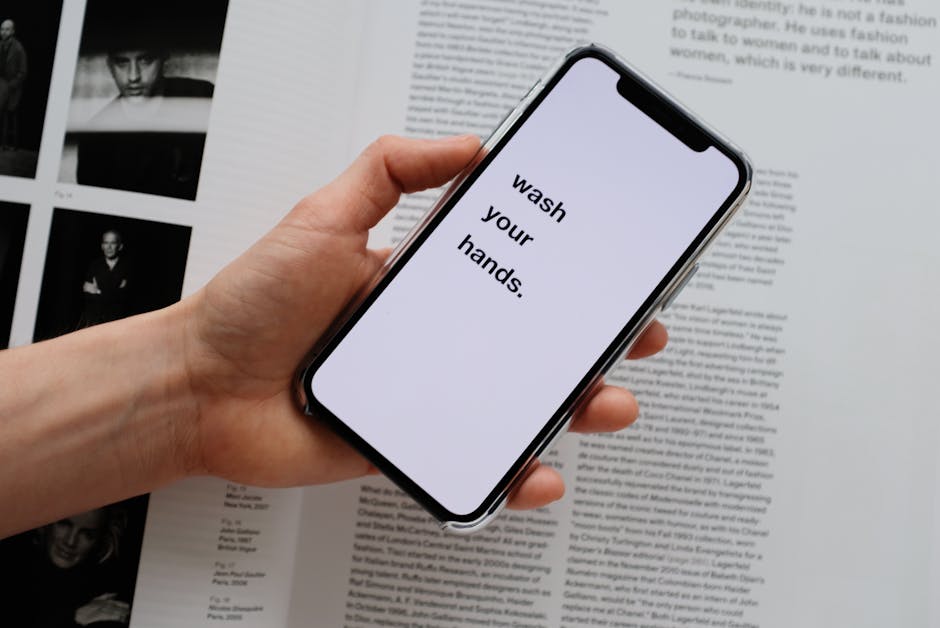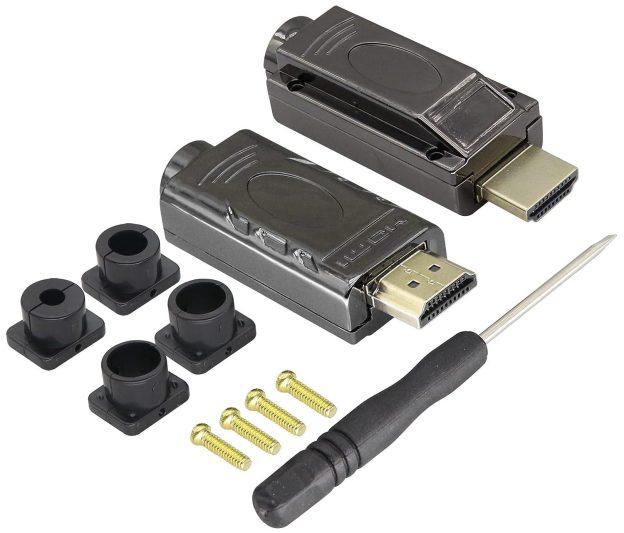(Disclosure, I may receive a small referral fee when you make a purchase through links on this post.)
Are you tired of unwanted guests hijacking your Chromecast and subjecting you to their questionable taste in TV shows? Or maybe you just want to prevent accidental casting mishaps during your next movie night? Fear not, dear reader, for we have the ultimate guide to securing your Chromecast HDMI connection and reclaiming control over your entertainment destiny. So sit back, relax, and enjoy the show - on your terms.
Identifying Potential Security Risks
So you think your data is safe and sound, huh? Well, think again! Cyber criminals are lurking in the virtual shadows, just waiting to pounce on unsuspecting victims like you. But fear not, for we have some tips on how to identify potential security risks and keep your precious information out of their grubby little hands.
One way to spot a security risk is to keep an eye out for suspicious emails. If you receive a message from a Nigerian prince offering you millions of dollars in exchange for your bank account information, chances are it’s a scam. Don’t fall for it! Always be wary of emails from unknown senders asking for personal or sensitive information.
Another red flag to watch out for is unsecure websites. If a website doesn’t have that trusty little padlock icon next to the URL, run for the hills! Your information could be at risk of being intercepted by hackers. Stick to websites with secure connections to keep your data safe and sound.
And finally, don’t forget about those pesky phishing scams. If you receive a text message claiming to be from your bank asking for your login credentials, don’t take the bait! Banks will never ask for sensitive information over text. Stay alert and double-check the legitimacy of any requests for personal data.
Setting Up a Secure Wi-Fi Network
So, you’ve decided it’s finally time to set up a secure Wi-Fi network, huh? Good on you for taking your digital security seriously! Let’s dive right into the nitty gritty of making sure no sneaky hackers can mooch off your precious internet.
First things first, change that default router password! Seriously, if your password is still “admin” or “password”, you might as well be inviting hackers in for tea and crumpets. Pick something complex, like “BananaHammer42″ or “P0t@to3$cape”. And don’t you dare write it on a sticky note and slap it on your fridge!
Next up, enable WPA2 encryption. It’s like wrapping your Wi-Fi signal in a digital force field. Ain’t no hacker getting through that! And while you’re at it, hide your SSID (that’s the name of your Wi-Fi network). Think of it like keeping your flashy car hidden away in a secret garage. Sneaky and secure!
Lastly, keep your devices updated. Those pesky software updates might be a pain, but they’re like little digital armor upgrades that keep your devices safe from the baddies. Now go forth, brave internet warrior, and conquer the world wide web with your impenetrable Wi-Fi!

Enabling Two-Factor Authentication
So, you’re ready to take your online security game to the next level by ? Good for you! Here’s a quick rundown of what you need to do to add an extra layer of protection to your accounts:
First things first, make sure you have a reliable authentication app installed on your device. There are plenty of options out there, but we recommend Google Authenticator or Authy. These apps will generate those fun little codes that you’ll need to log in securely.
Next, head over to your account settings and find the magical section that says “Two-Factor Authentication.” Click on it, and follow the simple instructions to link your account with the authentication app. It’s as easy as 1-2-3 (or should I say, code 1, code 2, code 3?)
Once you’ve successfully set up two-factor authentication, give yourself a pat on the back. You’re now officially a security-savvy superstar! Now, sit back, relax, and enjoy the peace of mind that comes with knowing your accounts are safe and sound. And remember, don’t share those codes with anyone – not even your best friend’s cat!

Updating Your Chromecast Firmware Regularly
Have you ever looked at your trusty Chromecast and wondered, “Hey buddy, when was the last time you updated your firmware?” Well, maybe you haven’t, but now that I’ve planted that seed of doubt in your mind, you can’t help but wonder, can you?
But fear not, dear reader, for updating your Chromecast firmware is as easy as pie (and no, not the kind you throw at your neighbor’s house). Just follow these simple steps:
- Make sure your Chromecast is connected to Wi-Fi. It can’t download updates if it’s living in the dark ages of technology.
- Open the Google Home app on your phone or tablet. Yes, that thing you use to spy on your family members’ internet history.
- Tap on your Chromecast device and navigate to the Settings menu. Think of it as the Chromecast’s version of a spa day.
- Scroll down until you find the option to check for updates. Give that button a little tap-tap-taparoo and watch the magic happen.
And voila! Your Chromecast is now up-to-date and ready to continue streaming all your guilty pleasure shows. So go forth, brave Chromecast owner, and bask in the glory of a firmware update well done.

Using Strong Passwords for Your Google Account
So you’ve decided to up your online security game and make sure your Google account is as safe as Fort Knox. Well, the first step to achieving that is by using a password that even Sherlock Holmes would have trouble cracking. Here are some tips to create a strong password that will keep the hackers at bay:
- Mix It Up: Don’t just rely on the old standby of “password123” – get creative with your password choices. Mix uppercase and lowercase letters, numbers, and symbols to create a password that is as unique as you are.
- Avoid Personal Info: While it may seem convenient to use your dog’s name or your favorite band as your password, remember that hackers can easily find this information online. Stay one step ahead by choosing a password that has no personal connection to you.
Remember, your Google account holds a treasure trove of personal information – from your emails to your search history. So make sure you’re doing everything you can to protect it with a strong password. And hey, if all else fails, you can always resort to the classic “correct horse battery staple” method. Just make sure you remember where you parked your horse!
Limiting Sharing Permissions on Your Chromecast
When it comes to sharing your Chromecast with others, the last thing you want is for your friends to accidentally cast something embarrassing to your TV. So why not take control of your sharing permissions and avoid any potential awkward situations?
One way to limit sharing permissions is by setting up a guest mode passcode. This way, only those who have the passcode can cast content to your Chromecast. It’s like having a secret code to enter the VIP section of a nightclub – except in this case, the VIP section is your TV screen.
Another option is to create a whitelist of approved devices that are allowed to cast to your Chromecast. This means that even if someone tries to connect, they won’t be able to unless their device is on your approved list. It’s like being the bouncer at a prestigious club, only allowing the cool kids in.
And if all else fails, you can always just unplug your Chromecast when you’re not using it. After all, if there’s no power going to it, there’s no way anyone can cast anything to it. It’s like putting up a “closed for renovations” sign on your TV – no unwanted casting allowed!
Implementing Guest Mode Safeguards
So you’ve decided to implement guest mode safeguards on your website, huh? Congratulations, you’re already one step closer to ensuring a smoother user experience!
Now, the key to successful implementation lies in setting up some ground rules that will protect both your guests and your website. Here are a few tips to help you out:
- Set up a timer for guest mode sessions, because let’s face it, some guests just don’t know when to leave.
- Make sure to restrict access to certain sensitive areas of your site – we don’t want any uninvited guests snooping around where they shouldn’t be.
- Implement a verification process for guests to ensure they are who they say they are. Nobody likes a party crasher!
Remember, the goal of guest mode safeguards is to strike a balance between welcoming guests with open arms and protecting your website from potential harm. With these safeguards in place, you’ll be on your way to hosting the best virtual party in town!
FAQs
How can I secure my Chromecast HDMI connection from potential hackers?
Well, the first thing you can do is to make sure your Wi-Fi network is secure. Change your router’s default password to something strong and hard for hackers to crack, like ”IWillDefendMyChromecastWithMyLife123″.
Is it safe to connect to public Wi-Fi networks with my Chromecast?
Absolutely not! Public Wi-Fi networks are like a hacker’s playground, so keep your Chromecast away from those sketchy connections. Stick to your own secure network for a safe streaming experience.
Can someone hijack my Chromecast’s signal and start playing random videos on it?
With great power comes great responsibility, as they say. Make sure to enable guest mode on your Chromecast so that only approved devices can connect to it. You wouldn’t want your Grandma accidentally streaming her knitting tutorials to your TV, would you?
What are some additional steps I can take to protect my Chromecast’s HDMI connection?
Consider setting up a virtual private network (VPN) for an extra layer of security. And if you’re really paranoid, you can physically block the HDMI port with a tiny lock or a piece of chewing gum. Just make sure not to accidentally swallow it.
Don’t Let Your Chromecast Get Away!
Don’t let sneaky hackers or nosy neighbors take a peek at what you’re streaming on your Chromecast. Keep your HDMI connection secure and your movie nights uninterrupted. Remember, a secure Chromecast is a happy Chromecast! Stay safe out there, streamers!




